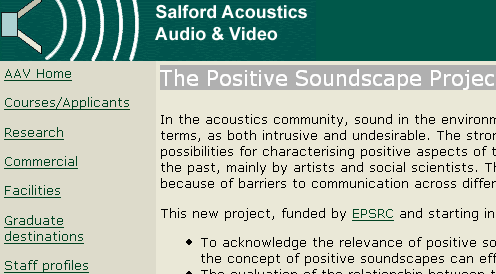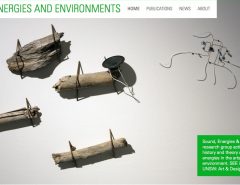The Positive Soundscape Project
In the acoustics community, sound in the environment,especially that made by other people, has overwhelmingly been considered in negative terms, as both intrusive and undesirable. The strong focus of traditional engineering acoustics on reducing noise level ignores the many possibilities for characterising positive aspects of the soundscapes around us. Desirable aspects of the soundscape have been investigated in the past, mainly by artists and social scientists. This work has had little impact on quantitative engineering acoustics, however, perhaps because of barriers to communication across different disciplines.
This new project, funded by EPSRC and starting in October 2006, aims to change this. The aims of the project are:
* To acknowledge the relevance of positive soundscapes, to move away from a focus on negative noise and to identify a means whereby the concept of positive soundscapes can effectively be incorporated into planning; and
* The evaluation of the relationship between the acoustic/auditory environment and the responses and behavioural characteristics of people living within it.
The methods used will be strongly interdisciplinary, with insights from sonic art, interviews and sound walks, as well as laboratory experiments on listeners all being used to provide a better account of the relationship between the soundscape and the perceptions of those within it. The project is unusual for several reasons. One is the way in which the different disciplines will help each other. For example, public response to the art projects will help generate data for designing the scientific lab experiments. On the other hand, the artists will take the scientific results and ‘translate’ them into creative artefacts. Another novel aspect is engagement with the public throughout the project: people will be taken on sound walks through real soundscapes, invited to play with virtual ones on the web, asked to tell planners how they feel about their local soundscape and even dared to have their brain scanned while listening to a scale of soundscapes.





Leave a Reply
Lo siento, debes estar conectado para publicar un comentario.